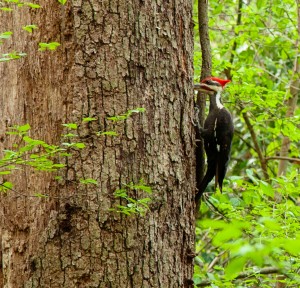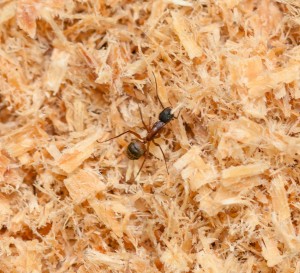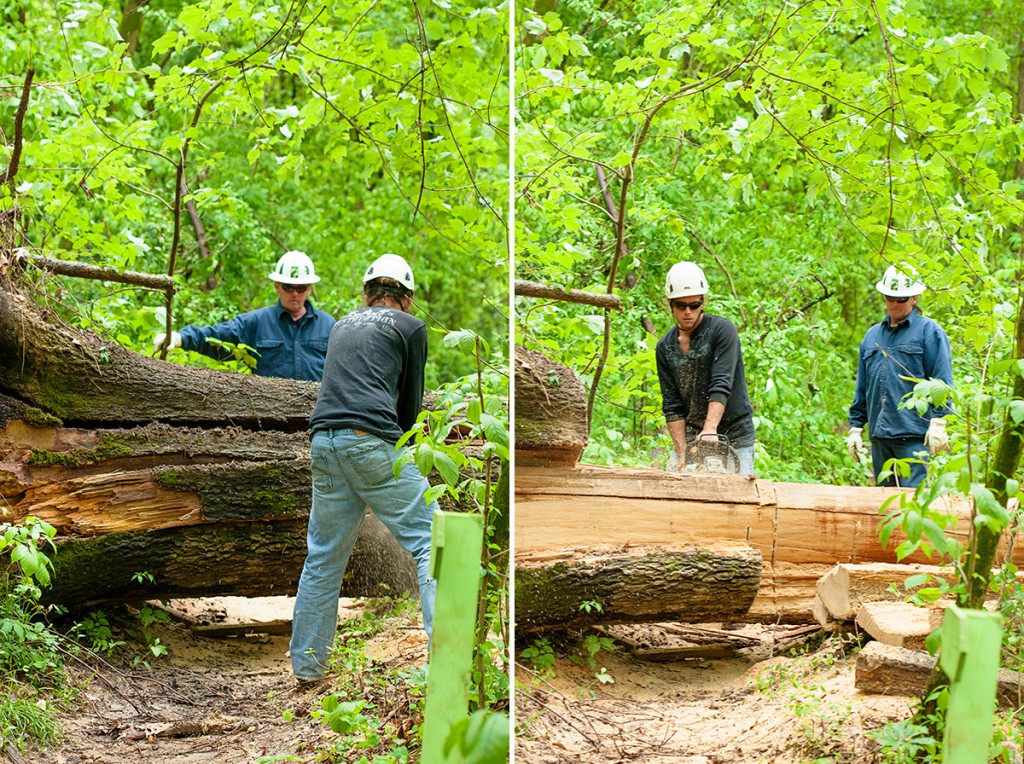If a Tree Falls in the Forest…

Overton Park is full of beautiful old trees. Many specimens in the Old Forest State Natural Area are estimated to be over 200 years old. But it’s not just old trees that are subject to falling during a wind or thunderstorm event–young trees that aren’t structurally sound can fall at any time too. On the exterior of the forest, it’s easier to spot trees that aren’t healthy and take steps to remove them before they become hazardous. But what about in the woods?
Within the Old Forest, occasional tree death is a fact of life. This week we had two large trees fall, one of which was a huge black oak that took out a couple of smaller trees when it uprooted. Our general philosophy in the forest is to let trees lie where they fall, much as they would in a forest untouched by human intervention.
Now this doesn’t always look like the most attractive way to manage a forest–large tree limbs just lying around amid all this other growth. But in a forest, a tree’s work is far from done after it’s dead. Here are a few of the reasons why we don’t remove dead trees from the woods:
- Dead trees help create soil. Rotting wood is colonized by fungi and mosses, which break it down into nutrients that enrich the soil. In turn, wildflowers, ferns, and new trees have a welcoming environment to take root, and erosion of the existing soil is reduced.
- They’re an excellent habitat source. Dead trees make a whole menagerie of life possible–from tiny ants to frogs to raccoons. Whole life cycles take place when a tree falls: insects move in, then woodpeckers make holes in the trees to pluck out the insects, and then smaller birds like wrens and chickadees make their nests in those cavities.
- They provide a natural reservoir. Large trees that fall over create pits where their roots had been and mounds where the trees decay. The pits trap water and leaves, helping reduce water runoff (which has the added benefit of less water collecting on walking trails). Pits and mounds support different kinds of life, which only adds to the richness of biodiversity in the forest.
- And finally…moving huge trees is hard! Imagine how long it would take–and how hard on a worker’s back it would be–to move several tons of tree through the narrow trails of the forest, especially since vehicles can’t be driven into the woods.

Unfortunately, these particular trees fell right across a walking trail, so we needed to take some kind of action. We want to preserve the existing trails, because if we allow them to become blocked then people will cut a path around the trees and create new trails, disturbing understory plants and habitat.
So we called our friends at Urban Forestry to come and cut a space the width of the trail in the black oak’s trunk. It was hard work, because the trunk kept coming off in layers rather than in one large chunk. Wes and Nathan had to be careful with the chainsaws, because the massive root ball (not to mention gravity) put tremendous pressure on the trunk. If they don’t saw strategically, part of the trunk could snap over onto them, or the root ball could fall toward them instead of away. Instead, they spent about an hour on each of the large trees, unearthing all kinds of beetles, ants, and even a skink hiding out from the day’s chilly weather.
Now, the forest will benefit from the rotting of these large trees, and park users will still be able to access the trails as they normally would. It’s a rare example of intervening in the life of the forest, but keeping humans on established trails is worth the effort in the long run.
If you see a tree that looks potentially dangerous (particularly in the more open, landscaped areas of the park), please let us know. The City of Memphis handles tree removal, and we’re happy to communicate with them if you see something that concerns you.




